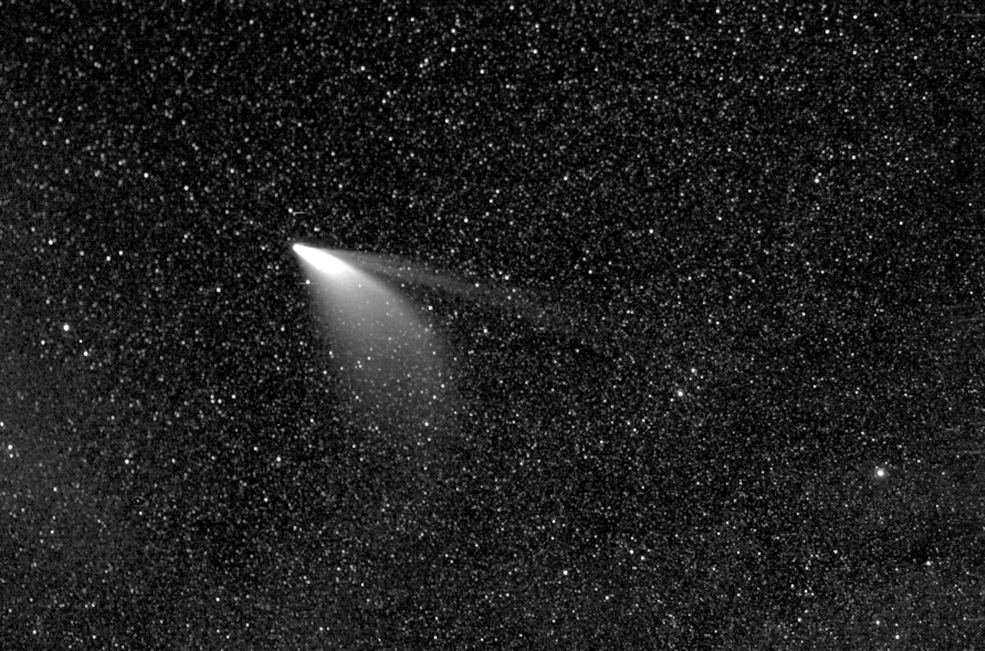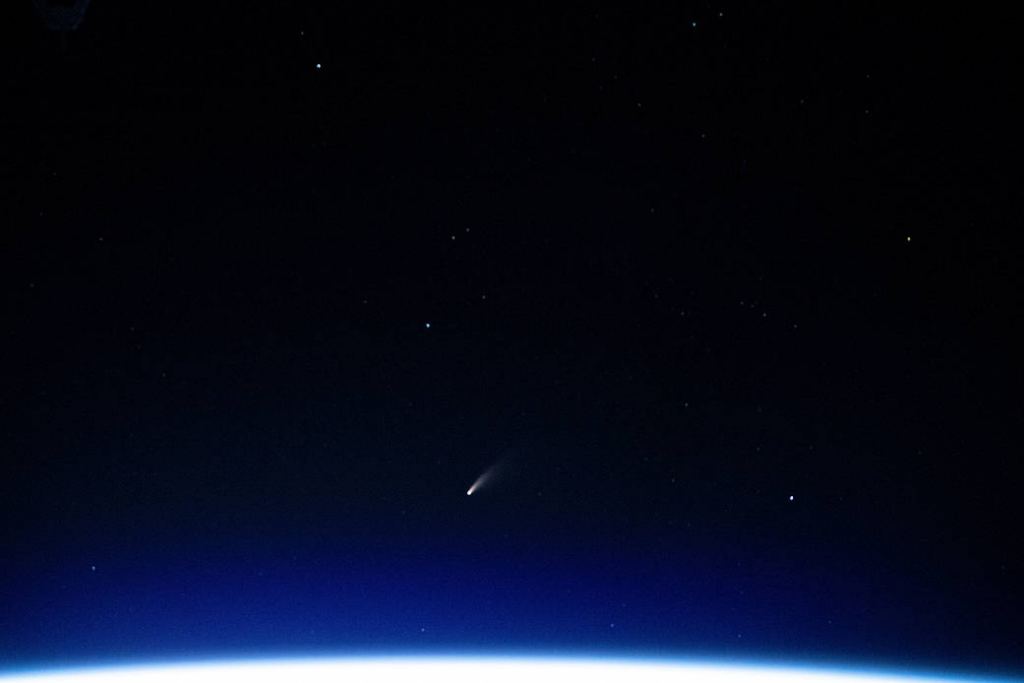Comet watchers have enjoying the newly-discovered NEOWISE comet since it was first spotted in March 2020. Now that it's visible with the naked eye, in dark sky conditions, all kinds of Earthly observers are checking the visitor out.
But NASA's Parker Solar Probe has another view of the comet, one denied to Earth-bound observers.
NEOWISE's actual name is C/2020 F3, but since the NEOWISE telescope discovered it, the name stuck. WISE was an infrared survey mission, but in 2013 it was re-christened as NEOWISE, which stands for Near Earth Object Wide-field Infrared Survey Explorer. NEOWISE was given a new job: detecting asteroids and comets.

The Parker Solar Probe has nothing to do with detecting asteroids and comets. Its job is to study the Sun. But as it turns out, it's in a great position to take images of comet NEOWISE. The leading image is of comet NEOWISE on July 5th, shortly after its closest approach to the Sun. The comet was particularly active as it was exposed to Solar radiation, and two tails are visible coming from the comet.
Comets contain a lot of water ice and other volatiles, and when they're heated during close approach to the Sun, they form tails of gas and dust. Those tails always stream away from the Sun, regardless of the comet's actual path.
One of the tails is the dust tail, and it's the larger of the two. The other fainter tail is the ion tail. Scientists want to use the Parker Solar Probe's WISPR instrument to study it. WISPR stands for Wide-Field Imager for Solar Probe, and it can be used to determine the size of the dust grains in the tail. They can also use it to tell how fast NEOWISE is shedding dust.

Credits: NASA/Johns Hopkins APL/Naval Research Lab/Parker Solar Probe/Guillermo Stenborg
The ion tail is made of ionized gases created by the Sun's radiation. Energy from the Sun strips electrons away from gases leaving ions behind. In the WISPR image, it appears that the ion tail is actually divided in two. But that hasn't been confirmed yet.
NEOWISE is a non-periodic comet, meaning it may never come back to the Sun, or it may take an awfully long time: possibly as long as a million years. In its name C/2020 F3, C means non-periodic, and 2020 is the year of discovery. The F shows which half-month it was discovered (A-B Jan; C-D Feb; E-F Mar; etc,) and 3 means it was the third comet discovered in March.
Comet NEOWISE poses no threat to Earth. It won't come closer than about 103 million kilometers (64 million miles). But scientists have learned a few things about the visitor to our Solar System. It's about 5 kilometers [3 miles] across. And according to Joseph Masiero, NEOWISE deputy principal investigator, "... the comet's nucleus is covered with sooty, dark particles left over from its formation near the birth of our solar system 4.6 billion years ago."
Comets are always interesting when they pass through the inner Solar System. Even if you don't know much about them, they make you pause and think when you see one. It would be quite strange if we didn't. But for scientists, each comet is also an opportunity to learn more.
In the book "Comet," by Carl Sagan and Ann Druyan, they call comets "...the pristine remnants of the origin of the Solar System..." Therein lies the scientific interest in them. Their nature and composition tells us something about the history of the Solar System, how it formed, and-by logical extension-where we came from.

No single visit from a comet will answer all our questions, but each one is an opportunity. And the Parker Solar Probe took advantage of its opportunity.